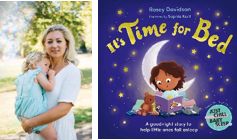
By Victoria McNally // SWNS
One in six couples trying to have children has struggled with fertility issues — and 40% believe that more resources or support would have helped them in the long run.
That’s the result of a new study of over 1,000 Americans, all of whom have either conceived or tried to conceive a child within the last two years. According to the results, it takes five months of “trying” on average for these couples to successfully get pregnant.
Although 33% of survey respondents initially believed it would take them less than three months to get pregnant, almost 70% were already four or more months into trying at the time of the survey.
Of those who took the survey, which was conducted by OnePoll for Clearblue’s #Conceivinghood campaign, 15% said their experience so far “has been a struggle.”
Many respondents were proactive about getting support; 90% of couples sought medical advice fairly early into the journey, after about four months of trying.
However, the average respondent has only told three to four people about their challenge with conception, most frequently their mother, best friend or sister. Thirty-two percent of responders think struggling to conceive is too awkward or uncomfortable to discuss with others, with 10% not having told anyone at all. More than 50% agreed that “the longer it took to conceive, the harder it was to answer people’s questions about our family plans.”
“Society always talks about motherhood, fatherhood and parenthood, but there’s a blind spot when it comes to discussing that delicate stage of trying for a baby.’” said Dr. Fiona Clancy, R&D Senior Director, Swiss Precision Diagnostics,. “We want the Clearblue #Conceivinghood campaign to serve as a platform for community and awareness, through which people can learn and take comfort from one another’s stories while sharing the facts and faces behind fertility.”
The survey also collected a wide range of feedback on the types of support respondents prefer to receive, lending credence to the idea that each parent-to-be has their own unique perspective.
“Giving advice is not helpful,” one survey-taker admitted. “We get plenty of advice from our healthcare providers and other people who conceived without any problems. Most of the time it’s unsolicited. I would rather ask or be asked questions to try to help with understanding.”
But while listening to advice may be difficult for some, others said they find comfort in conversation.
“It takes time, especially for non-traditional families,” one said. “It feels like you are alone in a world of people who have it easy and complain about problems when they don’t understand how easy they have it. But hold on because there are others of us out there.”
For more than six out of 10 people (64%), hearing stories about other people’s fertility struggles gives them hope.
And while only 16% of respondents who took some time to get pregnant said they resent the people they know who have children, sometimes their experiences can invoke other negative feelings like guilt or shame, which 31% have experienced.
Family planning in the midst of the COVID-19 pandemic has been especially taxing, even for those who haven’t struggled with getting pregnant. Almost half (48%) of all respondents have felt stressed, depressed, or anxious; a third (36%) have faced lowered income, job loss or decreased working hours, and a fourth (24%) have had to delay or cancel their scheduled fertility treatments.
“We hope to encourage other couples to share their own stories to provide support and most importantly hope for all other couples facing similar issues in their #Conceivinghood journey,” said Dr. Clancy.
WHAT’S IT LIKE TRYING TO CONCEIVE? A TOP TEN LIST
- “Exciting” – 41%
- “Fun” – 41%
- “Sexy” – 37%
- “Stressful” – 25%
- “Impersonal” – 20%
- “Boring” – 18%
- “Repetitive” – 17%
- “Frustrating” – 17%
- “Upsetting” – 15%
- “Difficult” – 12%
TOP TEN MOST COMMON FACTORS IN FERTILITY PROBLEMS
- Female reproductive issues – 35%
- Male reproductive issues – 25%
- Age – 24%
- Body weight – 20%
- Exercise – 19%
- History of miscarriages – 15%
- Tobacco or alcohol – 13%
- Side-effects from illness – 12%
- Side-effects from medication – 12%
- Environmental toxins – 10%



















